Baguio City: The Summer Capital of the Philippines
Baguio City, nestled in the province of Benguet in the Philippines, is a captivating destination known for its enchanting landscapes and cool climate. Situated approximately 1,540 meters (5,050 feet) above sea level on Luzon Island, it offers respite from the tropical heat experienced in other parts of the country. Baguio’s charming ambience, lush greenery, and breathtaking vistas make it a favourite among travellers seeking a refreshing escape.
Baguio City proudly carries the distinction of being recognized as the Summer Capital of the Philippines. This honorary title was bestowed upon the city due to its appealing climate and natural beauty, attracting tourists and locals during summer. It is a popular retreat for government officials, families, and vacationers seeking solace in its cool temperatures and serene environment.
This article aims to delve into the factors contributing to Baguio City’s esteemed status as the Summer Capital of the Philippines. By exploring its rich historical background, unique climate, abundant natural attractions, cultural heritage, vibrant festivals, delectable culinary offerings, and robust tourism infrastructure, we will uncover the essence of Baguio and understand why it has become the go-to destination for a memorable summer getaway. Join us on this journey as we unravel the enchanting allure of Baguio City, the Summer Capital of the Philippines.
Table of Contents
Historical Background

Historical Significance Of Baguio City
Baguio City carries a rich historical significance that adds to its allure as the Summer Capital of the Philippines. Before its transformation into a thriving city, Baguio was originally inhabited by the indigenous Ibalois and Kankanaeys. The area’s cool climate and fertile land drew the attention of early settlers and eventually caught the interest of the American colonial administration.
Establishment Of Baguio As A Summer Retreat
In 1900, Baguio was chosen by the American colonial government as the site for their summer retreat. Recognizing the city’s refreshing climate and picturesque surroundings, they envisioned it as a respite from the sweltering heat in the lowland areas. Thus, Baguio became a sanctuary for American officials seeking refuge during the scorching summer months.
Connection To The American Colonial Period
Baguio City’s development was closely tied to the American colonial period in the Philippines. Significant infrastructure was built during this time, including the iconic Kennon Road and the Baguio Cathedral. The city’s urban planning and architectural influences from the United States are still evident today, with remnants of colonial-era buildings and structures adding a unique charm to the city.
Role In The Development Of Tourism In The Philippines
Baguio’s establishment as a summer retreat sparked a newfound interest in the region, leading to tourism growth in the Philippines. Its accessibility, cool climate, and scenic beauty attracted not only American officials but also Filipinos and international visitors. As a result, Baguio City became a symbol of relaxation and leisure, and its popularity as a tourist destination soared.
The historical background of Baguio City, its establishment as a summer retreat, its connection to the American colonial period, and its pivotal role in developing tourism in the Philippines all contribute to the city’s reputation as the Summer Capital. Understanding its historical roots allows us to appreciate this remarkable destination’s cultural significance and enduring appeal.
Climate And Geographical Features
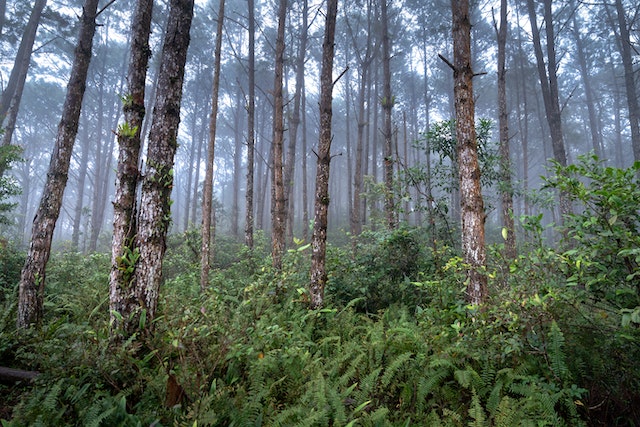
Baguio’s Cool Climate
Baguio City is renowned for its calm and temperate climate, making it a perfect summer getaway in the Philippines. Unlike most of the country’s humid and tropical conditions, Baguio offers a refreshing escape with its pleasantly cool temperatures year-round. Visitors can enjoy the crisp mountain air and comfortable weather, which is especially inviting during the scorching summer months.
Factors Contributing To The City’s Unique Weather
Several factors contribute to Baguio City’s unique climate. Firstly, its elevated location in the Cordillera Central mountain range contributes to cooler temperatures. The city sits at an altitude of approximately 1,540 meters (5,050 feet) above sea level, allowing it to benefit from the cooling effects of higher elevation.
Additionally, Baguio’s geographical features play a role in its weather. The city is nestled amidst rolling hills, lush pine forests, and picturesque valleys, creating a natural environment that contributes to the pleasant climate. The abundance of trees and vegetation helps regulate temperatures and provides a refreshing ambience throughout the year.
Elevation And Geographical Location Of Baguio City
Baguio City’s elevation and location contribute to its unique climate and appeal. Situated in the province of Benguet, it is approximately 250 kilometers (155 miles) north of Manila, the capital of the Philippines. Its strategic location in the northern part of Luzon, the country’s largest island, makes it easily accessible for travellers seeking a cool respite.
With an elevation of 1,540 meters (5,050 feet) above sea level, Baguio City offers a picturesque setting amid mountains and valleys. Its elevated position provides breathtaking views, a cooler climate, and an escape from the hustle and bustle of the lowland areas. The combination of Baguio’s altitude and scenic surroundings makes it a unique destination that captures the hearts of locals and tourists.
The cool climate, factors contributing to Baguio’s weather, and its elevated geographical location all add to the city’s charm as the Summer Capital of the Philippines. These natural features make Baguio an inviting and refreshing retreat, attracting visitors who seek relief from the heat and a tranquil environment to enjoy their summer vacations.
Natural Attractions
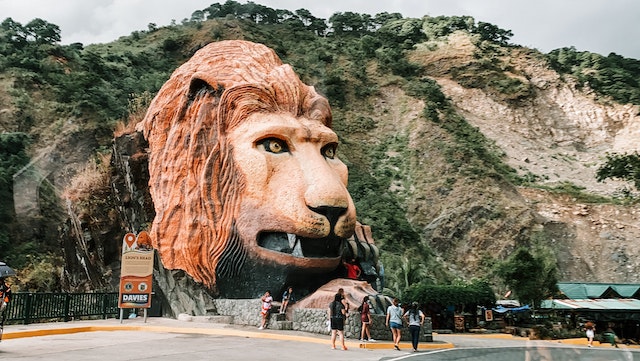
Baguio’s Scenic Beauty
Baguio City’s scenic beauty is truly captivating, with its lush greenery, rolling hills, and picturesque landscapes. Nature enthusiasts and visitors are drawn to the city’s refreshing ambience, where they can immerse themselves in the stunning natural surroundings. Baguio’s abundant flora and fauna and its cool climate create a serene and picturesque environment that is a feast for the senses.
Popular Natural Attractions In And Around Baguio
Baguio City has several popular natural attractions showcasing the region’s natural splendor. These attractions allow visitors to connect with nature, relax, and enjoy the city’s refreshing atmosphere. Here are some noteworthy natural attractions in and around Baguio:
Burnham Park
Located at the heart of Baguio, Burnham Park is a sprawling urban park that offers a serene escape amidst nature. Visitors can enjoy leisurely walks around its picturesque lagoon, rent a boat, or relax in the park’s lush green spaces. The park also features gardens, playgrounds, and recreational facilities, making it a popular destination for families and outdoor enthusiasts.
Mines View Park
Situated on a hilltop, Mines View Park provides breathtaking panoramic views of the surrounding mountains and valleys. Visitors can witness the stunning vista of abandoned mines, lush forests, and the picturesque Cordillera mountain range. The park also offers a chance to interact with friendly ponies and try on traditional Igorot attire, adding a cultural element to the natural beauty.
Botanical Garden
Baguio’s Botanical Garden showcases a diverse collection of native plants and flowers. Visitors can take strolls along the pathways, enjoy the soothing sounds of waterfalls, and appreciate the vibrant flora. The garden also features traditional huts representing various indigenous tribes of the Cordillera region, providing insights into the local culture and heritage.
The Mansion
Known as the official summer residence of the Philippine President, The Mansion is a stately mansion surrounded by beautifully manicured gardens. Its picturesque architecture and scenic surroundings make it a popular spot for photo opportunities. While visitors are not allowed inside the mansion, they can explore the gardens and admire the grandeur from the outside.
Wright Park
Wright Park is famous for its horseback riding activities. Visitors can enjoy a leisurely horse ride along tree-lined paths and experience the joy of bonding with these gentle creatures. The park’s serene environment, complemented by the vibrant flowers and scenic views, provides a delightful escape from the urban hustle.
Strawberry Farms
A visit to Baguio is complete with experiencing its renowned strawberry farms. Located nearby La Trinidad, visitors can pick fresh strawberries directly from the fields and savour their delicious sweetness. The farms also offer a glimpse into the region’s agricultural practices and provide a delightful activity for families and nature enthusiasts.
These natural attractions in and around Baguio City exemplify the region’s scenic beauty, allowing visitors to immerse themselves in nature’s wonders. Whether it’s the tranquillity of Burnham Park, the breathtaking vistas of Mines View Park, or the vibrant flora of the Botanical Garden, Baguio’s natural attractions are sure to leave a lasting impression on all who visit.
Cultural and Historical Sites
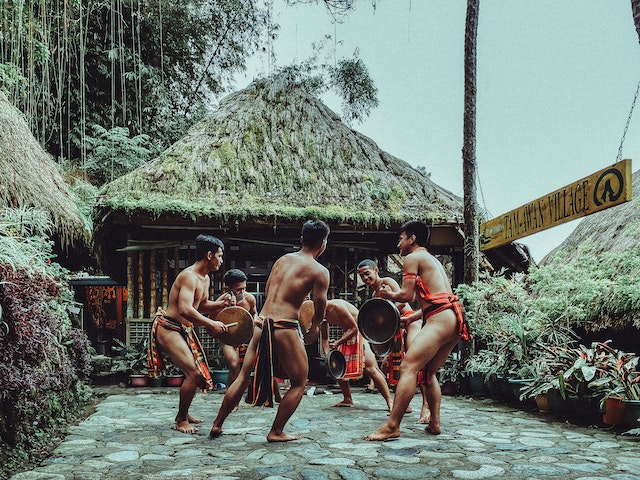
Baguio’s Cultural Heritage
Baguio City boasts a rich cultural heritage that reflects the diverse influences and traditions of its indigenous communities and the colonial era. The city’s cultural tapestry is woven with vibrant festivals, artistic expressions, and historical landmarks that provide a glimpse into its fascinating past. Exploring Baguio’s cultural and historical sites is a journey that deepens our understanding of its identity and enhances our appreciation for its unique charm.
Important Historical Landmarks and Sites
Baguio City has several significant historic landmarks and sites that have shaped its cultural landscape. These sites provide a glimpse into the city’s history and offer visitors a chance to immerse themselves in its rich heritage. Here are some notable cultural and historical sites in Baguio:
Baguio Cathedral
The Baguio Cathedral, officially known as Our Lady of the Atonement Cathedral, is a prominent religious landmark in the city. This majestic structure, with its distinctive twin spires and stained glass windows, symbolises Baguio’s strong Catholic faith. The cathedral’s serene ambiance and intricate architecture make it a place of solace and spiritual reflection.
Camp John Hay
Camp John Hay holds great historical significance as a former rest and recreation facility for the United States Armed Forces. It has been transformed into a leisure and resort complex that preserves its heritage. Visitors can explore the preserved historic buildings, stroll along scenic trails, and indulge in recreational activities while immersing themselves in the site’s rich past.
Baguio Public Market
The Baguio Public Market is a bustling hub that offers a glimpse into the vibrant local culture and commerce. It is a treasure trove of fresh produce, handicrafts, textiles, and local delicacies. Exploring the market allows one to engage with local vendors, sample regional flavors, and immerse oneself in the vibrant atmosphere of Baguio’s local market scene.
Tam-awan Village
Tam-awan Village is a unique cultural haven that showcases traditional Cordillera architecture and art. It serves as an interactive museum that provides insights into the indigenous culture and heritage of the Cordillera region. Visitors can explore the traditional huts, admire local artwork, and even participate in workshops to learn about traditional arts and crafts.
These cultural and historical sites in Baguio City offer a glimpse into its rich heritage and provide a deeper understanding of its cultural fabric. Whether it’s the spiritual serenity of the Baguio Cathedral, the historical significance of Camp John Hay, the vibrant ambiance of the Baguio Public Market, or the indigenous artistry of Tam-awan Village, each site contributes to the city’s cultural tapestry and invites visitors to explore its unique identity.
Festivals and Events

Baguio’s Vibrant Festival Scene
Baguio City is renowned for its vibrant festival scene, showcasing its cultural heritage, artistic expressions, and community spirit. Various festivals and events occur throughout the year, attracting both locals and tourists. These celebrations offer a unique opportunity to immerse oneself in the lively atmosphere, witness colorful parades, partake in traditional dances, and experience the joyful camaraderie that defines Baguio’s festive spirit.
Panagbenga Festival
Origins and Significance
The Panagbenga Festival is the most prominent and highly anticipated in Baguio City. “Panagbenga” translates to “Season of Blooming” in the local dialect, and the festival is a vibrant celebration of the city’s floral abundance and the resilience of its people. The festival was established in 1995 to uplift the residents’ spirits after the devastating earthquake that struck the region.
The Panagbenga Festival holds deep significance as it symbolizes the city’s revival, growth, and unity of its community. It is a testament to the city’s resilience and a platform to showcase the beauty of Baguio’s blooming flowers, traditional dances, and artistic talents.
Description of the Festivities
The Panagbenga Festival spans several weeks, featuring captivating events and activities. The festival’s highlight is the grand street parade, where participants don vibrant costumes adorned with elaborate flower-themed floats. The floats are meticulously decorated with many vibrant flowers, creating a mesmerizing spectacle that showcases Baguio’s floral abundance.
The festival also includes street dancing competitions, showcasing the colorful and rhythmic traditional dances of the Cordillera region. Cultural performances, art exhibits, and fireworks further enrich the festival experience. Throughout the celebration, locals and visitors can explore the city’s night market, indulge in local cuisine, and partake in various community activities that promote camaraderie and appreciation for Baguio’s cultural heritage.
Culinary Delights
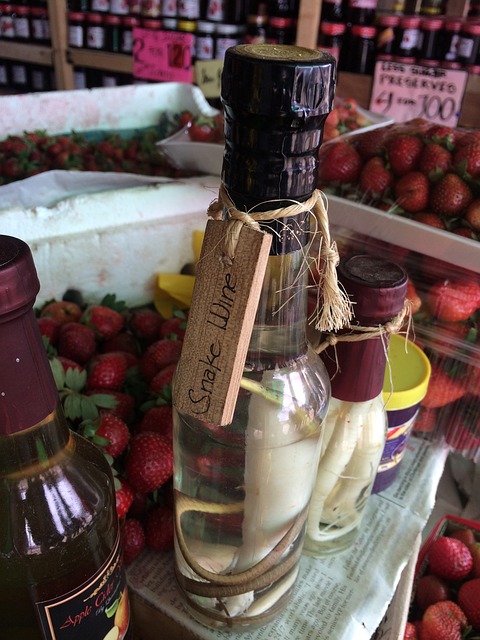
Baguio’s Diverse Food Culture
Baguio City is renowned for its natural beauty and cultural heritage and its diverse and delectable culinary offerings. The city’s vibrant food culture reflects its agricultural abundance, incorporating fresh produce and local flavors into its unique dishes. Exploring Baguio’s culinary delights is a delightful journey that tantalizes the taste buds and provides a deeper understanding of the region’s gastronomic heritage.
Famous Local Delicacies and Food Establishments
Baguio City’s culinary scene is a treasure trove of flavors and treats deeply rooted in the region’s rich agricultural traditions. Here are some famous local treats and food establishments that showcase the city’s unique culinary heritage:
Strawberry-based Treats
Baguio’s cool climate and fertile soil make it the perfect location for growing strawberries. Visitors can indulge in various strawberry-based treats, including fresh strawberries, ice cream, tarts, and jams. These delightful creations showcase Baguio’s homegrown strawberries’ sweetness and vibrant flavor, making them a must-try for any visitor.
Baguio’s Fresh Produce
Baguio City’s highland location and cool climate contribute to cultivating a wide range of fresh produce. The city’s public market is a haven for food enthusiasts, offering abundant fresh fruits, vegetables, and herbs. Visitors can savor the crispness and flavor of locally grown lettuce, broccoli, carrots, and other seasonal produce. The market also allows to sample unique Cordillera delicacies and regional ingredients.
Ukoy and Other Local Snacks
Baguio City is known for its delectable snacks, and one popular choice is ukoy, a Filipino shrimp fritter. These crispy delights are made from fresh shrimp mixed with flour and various spices, creating a satisfying combination of flavors and textures. Other local snacks worth trying include sundot kulangot (sticky rice cakes on skewers), strawberry taho (silken tofu with strawberry syrup), and peanut brittle, which is a sweet treat made from roasted peanuts and caramelized sugar.
Baguio City’s culinary delights offer a delightful exploration of flavors, showcasing the region’s fresh produce, creative use of strawberries, and unique local snacks. Whether it’s savoring the sweetness of freshly picked strawberries, embracing the freshness of Baguio’s produce, or indulging in the crunchy goodness of ukoy, each culinary experience in Baguio City is a celebration to the region’s agricultural heritage and its commitment to gastronomic excellence.
Accommodations and Tourism Infrastructure
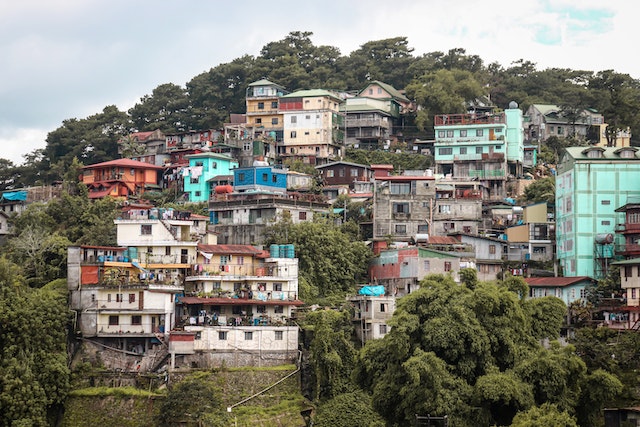
City’s Tourism Infrastructure
As the Summer Capital of the Philippines, Baguio City boasts a well-developed tourism infrastructure that caters to the needs of its visitors. The city has various facilities and services that ensure a comfortable and enjoyable tourist stay. From a range of accommodations to convenient transportation options, Baguio provides a seamless experience for travelers exploring its beauty and attractions.
Accommodations Options for Visitors
Baguio City offers diverse accommodation options to suit different preferences and budgets. Whether you seek luxurious hotels, cozy bed and breakfasts, or budget-friendly hostels, Baguio has something for everyone. The city is home to internationally recognized hotel chains, charming boutique hotels, and guesthouses in scenic surroundings. Visitors can choose accommodations with stunning views of the mountains, easy access to attractions, or proximity to the city center, ensuring a convenient and enjoyable stay.
Transportation Facilities and Accessibility
Baguio City is easily accessible by various modes of transportation, making it a convenient destination for travelers. The most common way to reach Baguio is by road, with well-maintained highways connecting the city to nearby provinces and major cities. Buses and vans operate regular routes to and from Baguio, providing affordable and comfortable transportation options.
Within the city, transportation is readily available, including taxis, ride-sharing services, and jeepneys, which are the local mode of public transportation. Navigating around Baguio is relatively easy, and many attractions are within a short distance from each other.
Additionally, Baguio offers tourist-friendly amenities, such as information centers and tour operators, who can assist in planning and arranging activities. These services ensure visitors can explore the city’s attractions and make the most of their stay.
Baguio City’s well-developed tourism infrastructure, diverse accommodations, and convenient transportation facilities contribute to a seamless and enjoyable experience for visitors. Whether you prefer a luxurious hotel, a cozy bed and breakfast, or a budget-friendly hostel, Baguio has various options to suit different preferences. The city’s accessibility and tourist-friendly amenities further enhance the overall experience, ensuring that travelers can fully immerse themselves in the charm and beauty of Baguio.
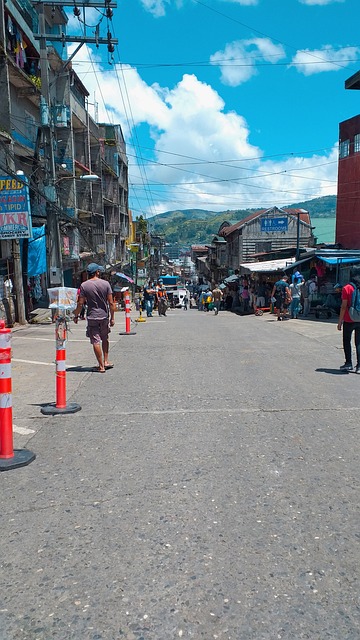
Recommended Read: 20 Filipino Trademarks That Captivate Hearts and Minds
Conclusion
Baguio City’s Significance as the Summer Capital of the Philippines
Baguio City, known as the Summer Capital of the Philippines, holds a special place in the hearts of Filipinos and visitors alike. Its cool climate, scenic beauty, and rich cultural heritage make it a sought-after destination for those seeking respite from the sweltering heat of the lowlands. Baguio’s status as the Summer Capital is not merely a title but a testament to the city’s unique attributes that have captivated generations of travelers.
Visit the Baguio City and Experience Its Charm
If you have yet to have the opportunity to visit Baguio City, now is the time to plan your journey. Experience the cool breeze gently kissing your skin, explore the picturesque landscapes, immerse yourself in the vibrant festivals, and savor the delightful culinary offerings. Baguio City offers a perfect blend of natural wonders, cultural richness, and warm hospitality, leaving you with lasting memories and a desire to return.
Baguio City’s enduring appeal as a popular tourist destination lies in its ability to offer something for everyone. Whether you are a nature lover, a history enthusiast, a foodie, or an adventurer, Baguio has abundant attractions and experiences to cater to your interests. From its natural wonders and cultural sites to its delicious culinary delights and comfortable accommodations, Baguio City ensures a fulfilling and unforgettable getaway.
As you explore the winding roads, breathe in the fresh mountain air, and immerse yourself in the vibrant atmosphere, you will understand why Baguio City holds a special place in the hearts of many. Its allure as the Summer Capital of the Philippines goes beyond its cool climate; it lies in the warmth of its people, the richness of its heritage, and the timeless beauty surrounding every corner.
So, pack your bags, embark on a journey to Baguio City, and discover why it has earned its reputation as the beloved Summer Capital of the Philippines. Let Baguio’s charm captivate you and create memories that will last a lifetime.
